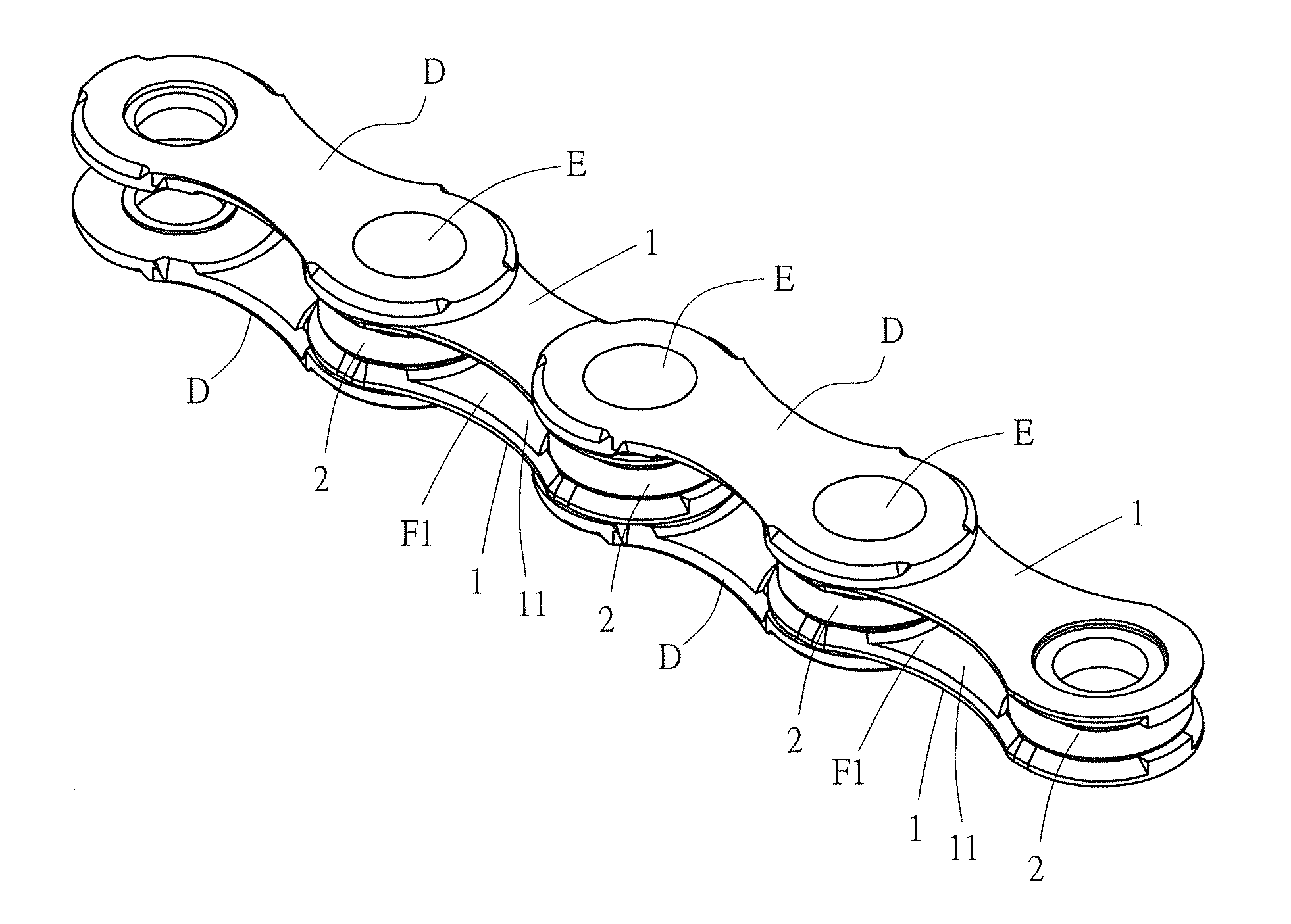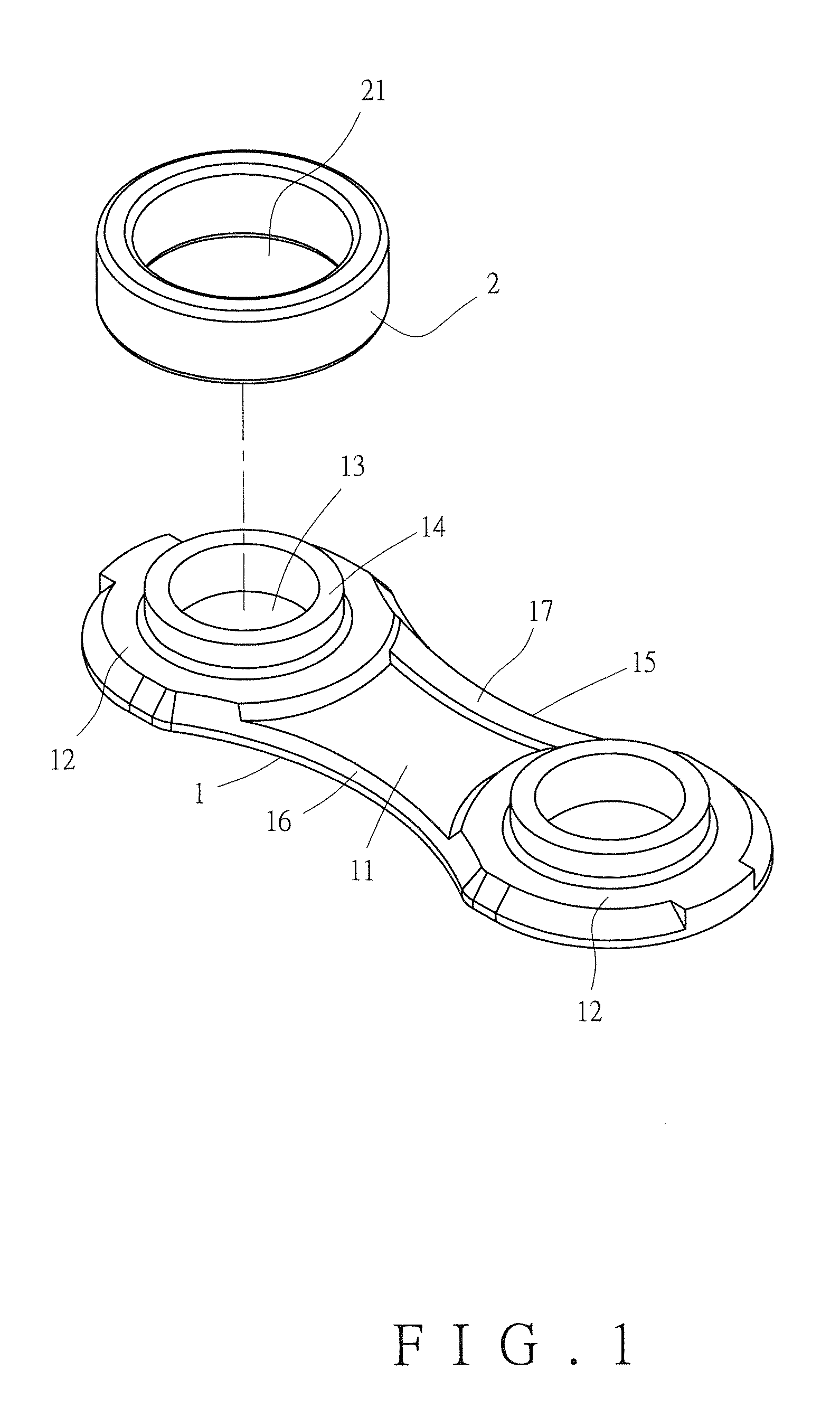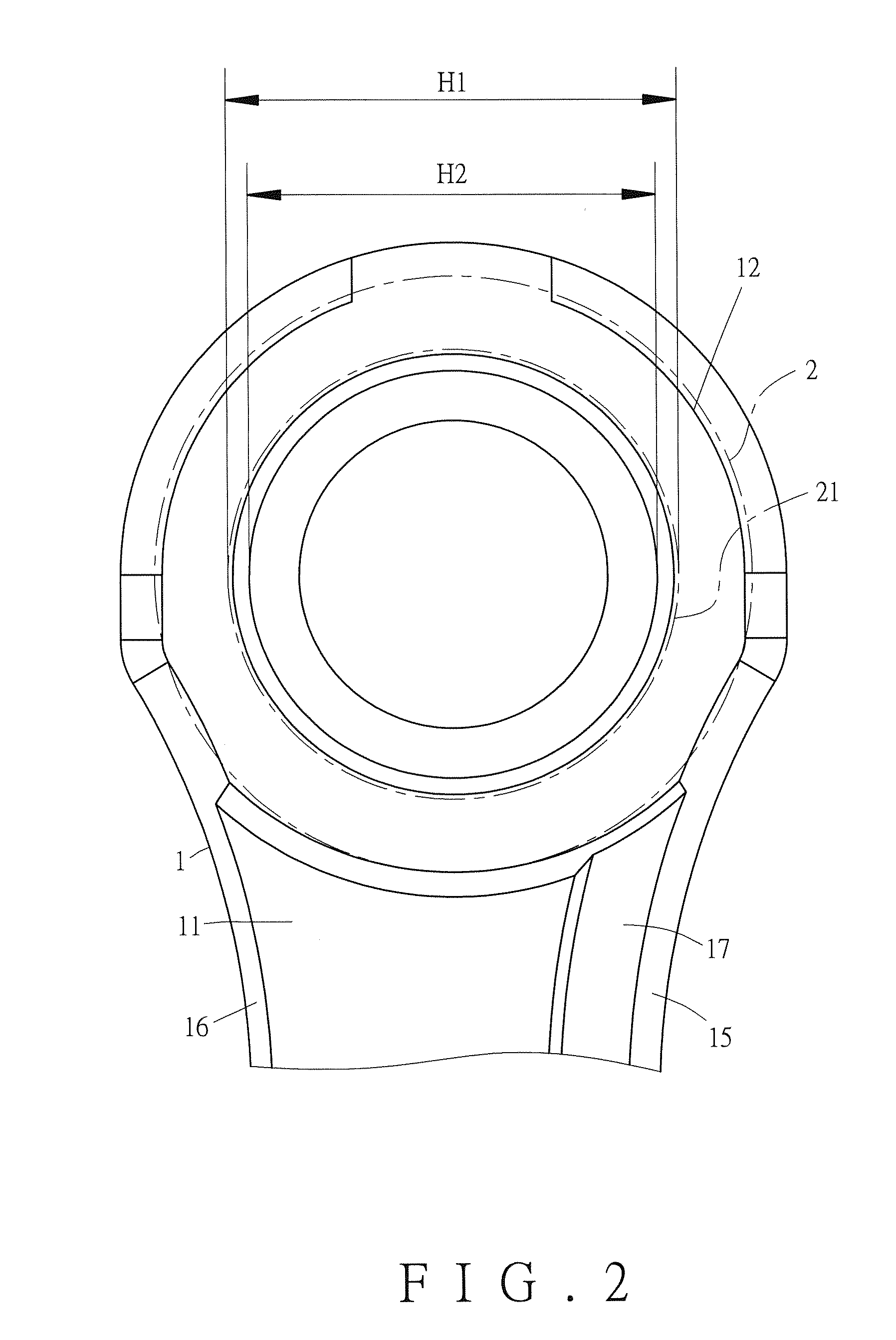Chain plate structure
- Summary
- Abstract
- Description
- Claims
- Application Information
AI Technical Summary
Benefits of technology
Problems solved by technology
Method used
Image
Examples
first embodiment
[0035]Referring to FIG. 1, in the present invention, a chain plate structure comprises a link plate body (1) and a sleeve (2).
[0036]The link plate body (1) has an acting surface (11) facing another link plate body (1). The link plate body (1) has two circular combining portions (12) formed at two opposite ends of the acting surface (11). The combining portion (12) is provided with a passing-through axial hole (13). The axial hole (13) is peripherally formed with a raised ring (14). The link plate body (1) has a first approach edge (15) and a second approach edge (16), both of which extend between the two combining portions (12) on the acting surface (11). The acting surface (11) is provided with a limiting block (17) adjacent to the first approach edge (15). The limiting block (17) has an altitude higher than that of the acting surface (11) and lower than that of the combining portions (12).
[0037]The sleeve (2) is mounted on the raised ring (14) of the link plate body (1). The sleev...
second embodiment
[0041]In the present invention, as shown in FIG. 8, the link plate body (1) has an acting surface (11). The link plate body (1) has two circular combining portions (12) formed at two opposite ends of the acting surface (11). The combining portion (12) is provided with a passing-through axial hole (13). The axial hole (13) is peripherally formed with a raised ring (14). The link plate body (1) has a first approach edge (15) and a second approach edge (16), both of which extend between the two combining portions (12) on the acting surface (11). The acting surface (11) is provided with two limiting blocks (17), wherein one of the two limiting blocks (17) is adjacent to the first approach edge (15) while the other is adjacent to the second approach edge (16). The two limiting blocks (17) each have an altitude higher than that of the acting surface (11) and lower than that of the combining portions (12). With the foregoing configuration, the first and second spaces can be similarly forme...
third embodiment
[0042]In the present invention, as shown in FIG. 9, the link plate body (1) has an acting surface. The acting surface is provided with a passing-through hollowed-out portion (18). The hollowed-out portion (18) allows the chain-engaging tooth of the guide pulley or the chain-engaging tooth of the transmission sprocket to offset transversely during shifting operation, so as not to deviate and hit the acting surface of the link plate body (1). The link plate body (1) has two circular combining portions (12) formed at two opposite ends of the acting surface. The combining portion (12) is provided with a passing-through axial hole (13). The axial hole (13) is peripherally formed with a raised ring (14). The link plate body (1) has a first approach edge (15) and a second approach edge (16), both of which extend between the two combining portions (12) on the acting surface. The acting surface is provided with two limiting blocks (17), wherein one of the two limiting blocks (17) is adjacent...
PUM
 Login to View More
Login to View More Abstract
Description
Claims
Application Information
 Login to View More
Login to View More - R&D
- Intellectual Property
- Life Sciences
- Materials
- Tech Scout
- Unparalleled Data Quality
- Higher Quality Content
- 60% Fewer Hallucinations
Browse by: Latest US Patents, China's latest patents, Technical Efficacy Thesaurus, Application Domain, Technology Topic, Popular Technical Reports.
© 2025 PatSnap. All rights reserved.Legal|Privacy policy|Modern Slavery Act Transparency Statement|Sitemap|About US| Contact US: help@patsnap.com



